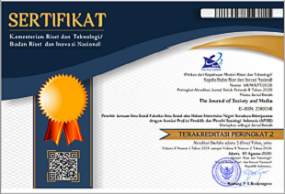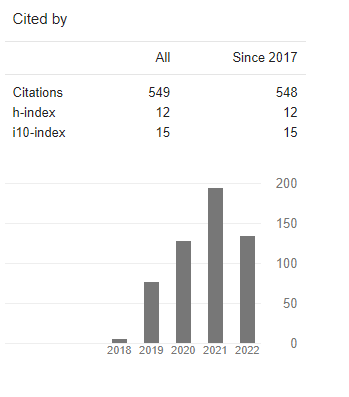Nollywood: Revisiting the Change Prism towards Sustaining Societal Development
DOI:
https://doi.org/10.26740/jsm.v7n2.p593-607Keywords:
film, nollywood, positive change, persuasion, sustainable developmentAbstract
Nigeria's film industry had a significant year in 1992. Since then, numerous films have faced criticism for promoting negative behavior and attitudes. However, this study challenges those claims, demonstrating that Nollywood films can promote positive attitudes and sustainable development. The study analyzed two films: Daybreak in Udi and Nigeria: A Squandering of Riches. To achieve this goal, Nollywood is expected to facilitate the needed development through productions aimed at persuading the people to adopt values that enhance a better life and motivate them to greater heights in development. To this end, it was advanced that there was a need for Nollywood to revisit the changing prism by making significant films geared towards social and cultural reorientation leading to sustainable national development rather than placing undue emphasis on entertainment value and box office returns. The study appealed to the government at all levels and non-governmental organizations (NGOs) to come to the aid of the film industry to enable it to play this significant role.
References
Anon. 1984. Nigeria: A Squandering of Riches (BBC Documentary Full Film).
Ekwuazi, Hyginus. 1991. Film in Nigeria. 2nd ed. Jos: Nigerian Film Corporation.
Opubor, Alfred E., and Onuora E. Nwuneli, eds. 1979. The Development and Growth of the Film Industry in Nigeria. Nigeria: National Council for Arts and Culture.
Shaka, O. Femi. 2004. Modernity and the African Cinema. Trenton: African World Press Inc.
Ukala, Sam. 2006. Manual of Research and of Thesis Writing in Theatre Arts. 2nd ed. Ibadan, Nigeria: Kraft Books Ltd.
UNESCO. 2021. The African Film Industry: Trends,Challenges and Opportunities for Growth. France: United Nations Educational, Scientific and Cultural Organization (UNESCO).
World Commission on Environment and Development. 1987. Our Common Future. New York: Oxford University Press.
Zaniello, Tom. 2007. The Cinema of Globalization: A Guide to Films about the New Economic Order. Ithaca: ILR Press.
Downloads
Published
How to Cite
Issue
Section
License
Copyright (c) 2023 The Journal of Society and Media

This work is licensed under a Creative Commons Attribution 4.0 International License.
 Abstract views: 386
,
Abstract views: 386
, PDF Downloads: 215
PDF Downloads: 215












